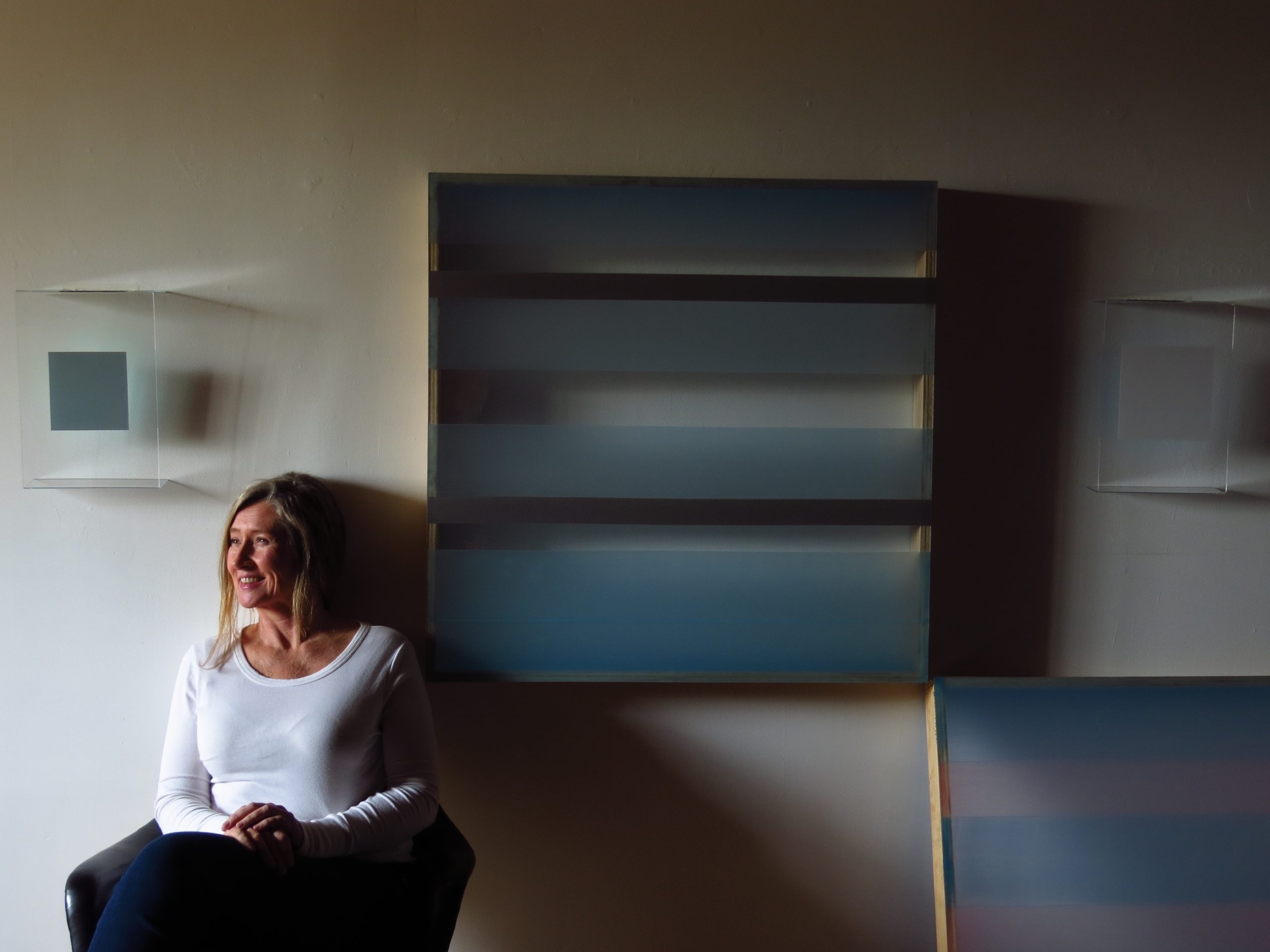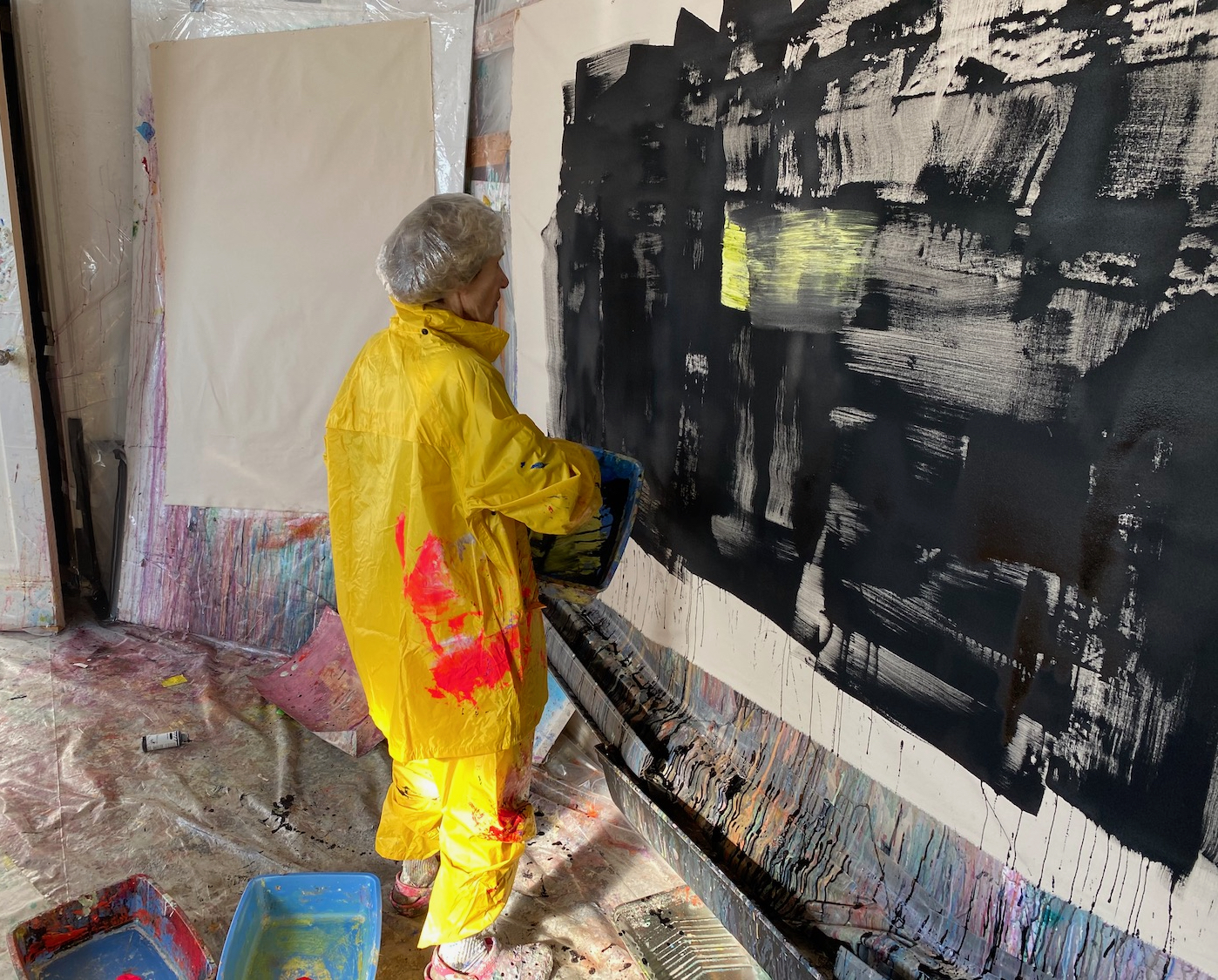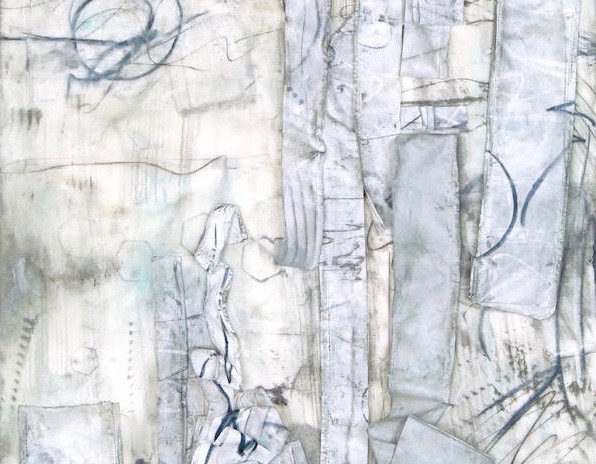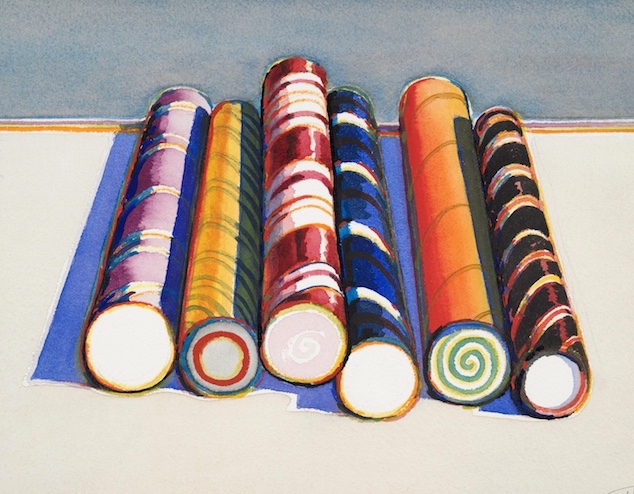
At what age did you decide to become an artist?
I was very young, probably seven, when I carved out a space and designated it as a studio. At the time my family was living in Bisbee, Arizona, a very compact town populated with many artists. I had become friends with a few artists and had access to their studios, sometimes even helping them with their work. I was fortunate to have the space available to me within my family home to mimic the idea of a having a studio in a grand hotel. Before ADD was a diagnosis, I had trouble in school, and I figured out early that if I asked, a teacher would usually allow me to receive credit to “make something” that I had decided would enhance the classroom. The extra credit would ameliorate my bad grade and allow me to pass the class. Art making became a functional survival method early on.
How did your parents react when you told them you wanted to be an artist?
My parents were fairly hands-off in my upbringing, and my father was an artist, a caricaturist who came from generations of working artists. Many around us were artists. As long as I wasn’t expecting financial support from them, being an artist was well-accepted by my family. However, they did recommend that I buy and operate a hot dog cart to supplement my income or that I marry a rich man. I did not follow their advice.
Who are your favorite artists?
Some artists who continue to excite me whenever I see their work are: J.M.W. Turner, Corot (his seascapes), Giorgio Morandi, Piero della Francesca, Edward Hopper, and René Magritte. Recently, along with the rethinking of the canon, I would add Dorothea Tanning and Leonora Carrington. I also resonate with the work of anonymous ancient artists from various cultures whose work I’m only able to see because it has been recognized as being worthwhile enough to be looted, smuggled, and then displayed in museums. These nameless and seemingly egoless artists, whoever they were, rarely disappoint me. I have always been drawn to kinetic works of art, especially Rebecca Horn (sculptor, film maker, installation artist), Lygia Clark, and Agam. Recently, I’m very keen on Alexander Calder’s mobiles.
Who is your favorite artist whose work is unlike your own?
The work of the above artists is not like mine, and there are other artists whom I am drawn to whose work looks nothing like mine. However, they are addressing similar issues in painting as I am, so there is something for me to learn from them, and I am in awe of their creative journeys. I am constantly discovering new people who fit into this category. Most recently, I’ve been looking at the work of Jordan Belson, John Beech, and Harold Schwarzberg. At the same time, I learn a lot from artists whose work does appear similar to mine; these lessons are often in the form of a cautionary tale.
Art book you cannot live without?
Seeing Is Forgetting the Name of the Thing One Sees: Over Thirty Years of Conversations with Robert Irwin, written by Lawrence Weschler.
What is the quality you most admire in an artist?
Humility, curiosity, humor—any of these traits, preferably all.
Do you keep a sketchbook?
When I was younger and my life was more nomadic, I kept one sketchbook at a time that I would carry with me. Now that I’ve been extremely settled for a long time, it is less of a formal process. I have kept analog calendar agendas for decades and many blank books and yellow pads that I write and sketch in—they float around my backpack, my studio, and my kitchen table. Whenever I really need to figure something out in my life or in my art, I usually turn to pencil on paper.
What’s your favorite museum in all the world?
There are so many continents and museums in the world that I’ve never visited. There are close to 150 museums in NYC alone. Aren’t we lucky! Because of its intimacy, sense of place and mono focus I would say that Musée Rodin in Paris is my favorite of those I’ve actually visited. For the same reasons, I would cite Museo Morandi in Bologna and the Burchfield Penney Art Center in Buffalo. In order to really understand a work of art, it is important to know what came before it and what came after it. The museums that focus on one artist are often sited in the region that the artist worked in, so you are surrounded by the same light and atmosphere, which can be illuminating. This type of museum usually has a re-creation of the artist’s studio and materials. This provides the opportunity for a deep dive into that artists’ creative process, often the most interesting part for me.
What’s the best exhibition you have ever attended?
Recently, during the pandemic, David Zwirner mounted a sublime exhibition of Giorgio Morandi and Joseph Albers in Chelsea. Maybe it became so special because I saw it a number of times, and there was seemingly no one else there? All the works were about the same size and very small by today’s standards. A somewhat unlikely pairing, Morandi’s landscapes and still lifes alongside Albers’ right angle squares. The two had lived and worked in a similar timeframe but in different countries and had never even met. The installation was extremely well done, gently inviting comparison between the two, where the works ended up supporting and complementing each other and leading the viewer to really think about color, rhythm, and composition.
If you were not an artist, what would you be?
I’m very interested in human adaptability and neuroplasticity. I would still love to work on designing solutions for the future of humans living sustainably on and with the earth.
Did you have an artistic cohort that influenced your early creative development?
I left home when I was still a teenager and moved to the San Francisco Bay Area. When I wasn’t working, I hung out at the Caffe Trieste in Sausalito. There were many young people like me there, and we would plan and scheme our artistic futures. This worked out well because it was a multigenerational scene with many other regulars who were either in the midst of their creative lives or much older and looking back to offer guidance. The big message I received was, “Get out of this cafe and go to New York!”
What is one thing you didn’t learn in art school that you wish you had?
I didn’t go to “art school” per se. I did however come to NYC in the eighties, chiefly to attend the Art Students League! I was inspired by the light captured in the paintings of Edward Hopper and Guy Pène du Bois, and I learned that they had been affiliated with the Art Students League. When I looked into attending ASL from the West Coast (by mailing away for a catalog), I found out that the classes were only one month at a time, not an interminable semester, and that I could afford to study there while supporting myself as a waitress. I had never been east of the Mississippi, I arrived with all my belongings in a suitcase at Newark airport at the golden hour and took the bus over the George Washington Bridge to Manhattan. I saw for the first time the light and shadow that Hopper and Pène du Bois had captured. Twenty-five years into my “career” as an artist, I went back to school to finish my undergraduate degree. I studied “Arts Management,” and I learned the business side of art, grant writing, organizational behavior, etc. These are things that one doesn’t generally learn in art school. This invaluable information has helped me to not take the business aspect personally and my grant writing skills have given me the tools to be articulate and focused in what I want from the work. I recommend that artists check in with The Foundation Center (now Candid) and take any of their grant writing workshops.
What work of art have you looked at most and why?
The work I have looked at the most the past thirty years is that of my housemate, studio mate and husband, Mark Thomas Kanter.
I really love his paintings and they hang in our home. We each are important to the other’s process and have come to rely on invited input and feedback in the studio. I feel very fortunate to have easy access to trusted eyes and a critical voice during the process of creating works.
What is your secret visual pleasure outside of art?
My excitement about the natural world is probably not a secret, but I am always grounded and left hopeful by a sunrise, a sunset or a moonrise. A good long stare at a horizon where the water meets the sky will last me months. Recently, I’ve been tripping out on mountains.
Do you listen to music in your studio?
I do listen to music in my studio. Due to a family subscription, I had been convinced to use Spotify for the past few years. However, I just set my CD player up again. I am much happier with this mode of delivery because I like the intended flow of the song order on an album, and I can just turn my phone off, which has many benefits. I tend to play the same music over and over again in its intended sequence, so there is nothing unexpected (unless the CD skips). I can enter the music without having to think about it. It becomes a ritual that triggers getting to work and getting into “the zone.”
What is the last gallery you visited?
Levy Gorvy just regrouped as LGDR and moved to an amazing palatial townhouse, across 89th Street from the Guggenheim. They had an extensive exhibition of Marina Adams’ paintings on multiple floors. I am familiar with the work, but she isn’t extremely well-known. They were large, bold abstract paintings, seemingly discordant with the very formal architecture; this brought in some tension, and the paintings triumphed and won over the space. Since moving to NYC in the eighties, I have consistently visited galleries and auction houses. It is an incredible opportunity to see work of all kinds. I still find it wonderful and amazing that anyone can just walk in off the street. I sometimes think that the public accessibility of galleries and auction houses for those who could never afford to purchase the work will end one day. This lights a fire under me every month and once again I go out and see what’s up.
Who is an underrated artist people should be looking at?
Most all known artists have been underrated at some point and will most likely be underrated again. If they are lucky, they’ll get hot for a moment on the way, sometimes it happens posthumously. The career of every artist who is showing will inevitably ebb and flow. Pick up any major art magazine from a decade ago. Many of those celebrated there aren’t heard from now, but could possibly be again in another ten years. The art world is not a meritocracy; luck and being ready when the luck strikes are very important to outward success. Always be ready.
What art materials can you not live without?
Looking back at the past thirty-five years of my work, I guess I’d have to say Plexiglas.
Do you paint/sculpt/create art every day?
If I’m not stressed under a deadline, I usually take a day or two off from the studio every week. I have no problem with voluntarily not going to the studio every day because it allows me to come back in with fresh eyes and new thoughts. I take a mini studio with me whenever I travel or when I’m on “vacation.” I like how making something somewhere new and different has a way of distilling and holding that time and experience.
What is the longest time you went without creating art?
I don’t really remember having a definite period of not working; it’s just what I do, what I’ve always done. Before my son was born, I made a little nursery in the studio, so I could bring him with me as soon as he was born and take advantage of all the sleeping that babies do. Once he was walking, that plan was dust. As far as “creating art,” I give much credence to the art of life and living. For me creating is the alchemy that occurs with the transformation of materials. This also happens with functional things like making food or creating an atmosphere to exist in.
What do you do when you are feeling uninspired?
If I’m in the studio and I don’t feel like working but I need to get some stuff done, I will sweep the floor. I can usually muster inspiration from the repetitive action and noticing what I’ve discarded. As I gather what has fallen away and now lies on the floor I am usually reminded of and brought back into the processes I had recently participated in.
What are the questions that drive your work?
At the moment I’m thinking about how clouds gather water from mountaintops and how clouds are akin to rivers in the sky. In turn, the mountains were once underwater or, in the case of the Catskills Mountains where I live, they were actually glaciers. Sometimes mountains can look like cresting waves. Cloud formations can resemble mountains and waves. In 2005, after hurricane Katrina, my otherwise minimal work took on the charge of the rapid changes we are experiencing in our environment. I set out to exemplify and bring attention to the sublime and at times deadly beautiful displays of weather that Gaia (the Greek goddess of Earth) is putting on. I believe that these sublime displays are intended to gain our urgently needed attention. I try to exemplify these moments in my work.
What is the most important quality in an artist?
Curiosity.
What is something you haven’t yet achieved in art?
With every piece, I’m still trying to get it right. It’s OK; this is a good problem to have. I’ve known many artists in their nineties whose quest to get it right keeps them going to the studio and working up until their last breath. I aspire to keep my body moving and my mind agile so I can continue following my desire to get into the studio to transmute energy and materials until I’m somewhat satisfied. I have not yet been fully satisfied with what I make, however I feel that I might be on to something.
What is the best thing about art in the era of social media?
Personally, I like having the ability to provide a backstory for my work. Likewise, I learn much about what’s behind other people’s work who I follow. This usually leaves me with a greater understanding and ultimately an appreciation for the work and the process. Universally, the internet appears to have the potential to facilitate a bypass around “the gate keepers” and is making contemporary art much more global than it ever had the potential to be before. I’m very interested to see how this plays out over time in the art world.
HEATHER HUTCHISON (Heather Hutchison and @originalheatherhutchison) teaches Mixed Media, Assemblage… Relief at the Art Students League of New York.




